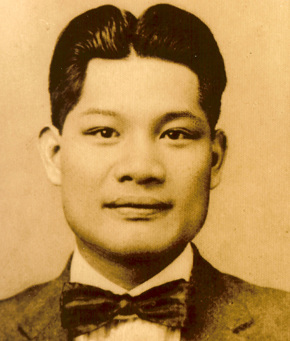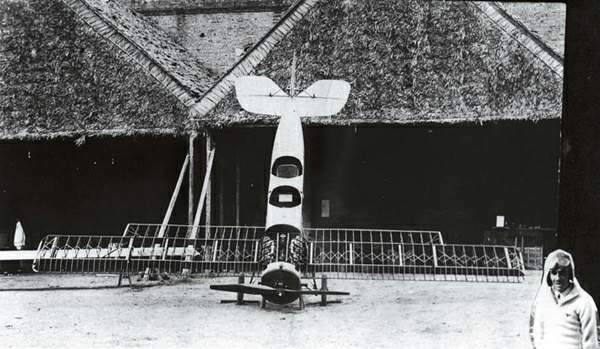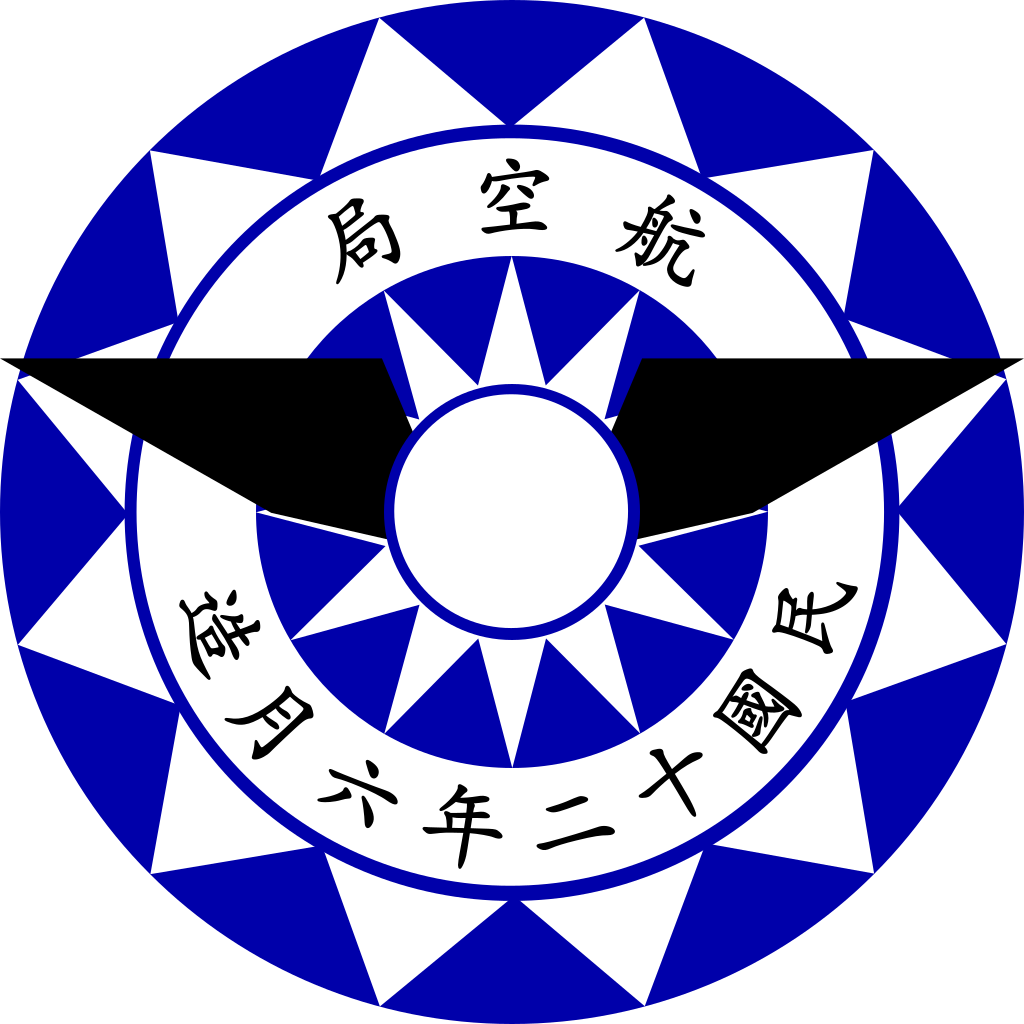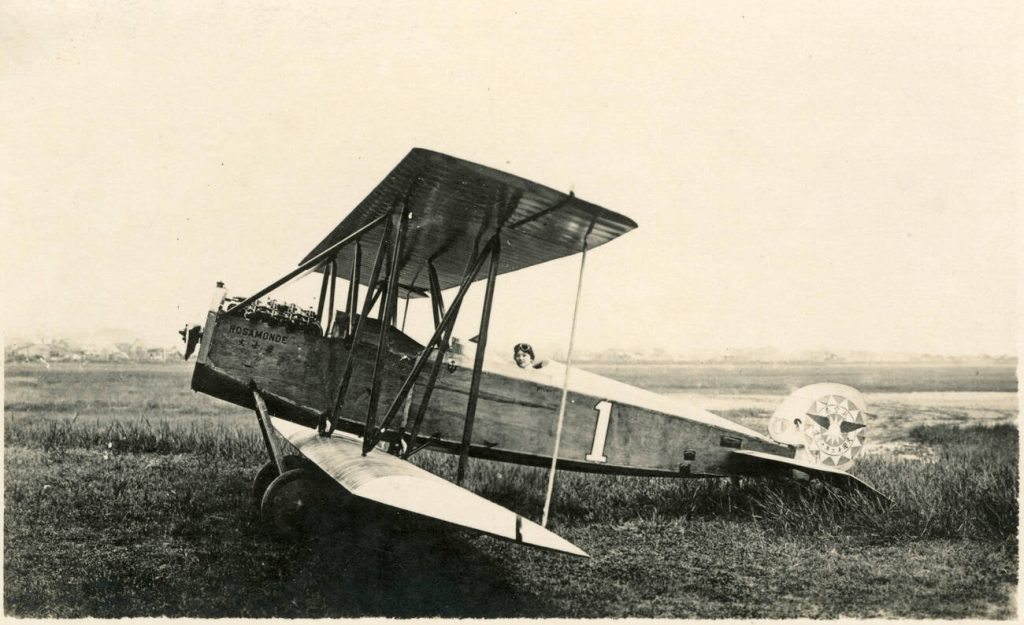
The Rosamonde was the one of the first indigenous Chinese aircraft build.
The Guangdong Aircraft Manufacturing Factory
In 1923, Sun Yat-sen established the Generalissimo Mansion (大元帥府, Dàyuánshuài fǔ). This is also translated as Grand Marshall’s. Part of this was the Aviation Bureau (航空局, Hángkōng jú), with Sen Yet Young (楊仙逸, Yáng Xiānyì1) appointed as director. In February of the same year, Young established the Guangdong Aircraft Manufactoring factory (廣東飛機製造廠, Guǎngdōng fēijī zhìzào chǎng) in Dashatou, Guangzhou. Conditions were exceedingly basic. Nevertheless, under Youngs leadership a team was assembled at the factory started on a new, indigenous aircraft.
The team was led by two American engineers; Guy H Colwell and Arthur R Wild. They were recruited by Young during his visit to the USA in 1922. Colwell and Wilde arrived in Shanghai in April of 1923. Young tasked Colwell with designing a new, lightweight reconnaissance/bomber aircraft. Wild responsible for production preparation and procurement of parts and tools. The design emphasised ease of maintenance and usage of locally available materials such as wood. Metal usage was kept at a minimum. A 100 HP Curtiss OXX-6 engine was sourced from the Bureau’s inventory. The propeller and instruments were also taken from Curtiss N-9C and JN-4D aircraft.
Under Lo Wei-pu an aircraft was build. Construction started in March 1923 and the plane was completed in early June. The aircraft was constructed primarily of spruce wood with some metal components. The wings featured Pratt-style trusses with a linen covering, and the fuselage combined spruce framing with plywood panels. Control surfaces were reinforced with fabric. The plane had an overall yellow finish, with the Aviation Bureau emblem and number on the tail, and the name on the nose. It received serial number “1”.
The maiden flight took place on June 12 1923 by pilot Harry Abbott. According to his wife, Abbott noted that “The plane takes off very skillfully, is very stable, and is easy to control. It is a pleasure to fly it.”.
Test flight ceremony
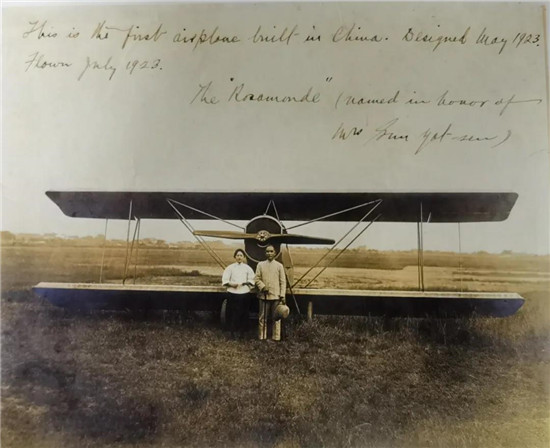
The text reads: “This is the first airplane built in China. Designed May 1923. Flown July 1923. The ‘Rosamonde’ (named in honor of Mrs. Sun Yat-sen).”
Courtesy of 北京宋庆龄同志故居管理中心
Either Young or Yat-sen suggested naming the plane “Rosamonde” (樂士大), the Christian name of his wife Soong Ch’ing-ling. The naming ceremony took place on August 8 1923, and was attended by prominent military and political figures. The plane was officially christened by Yat-sen by breaking a bottle of champagne over the radiator. During the test flight ceremony, Soong flew as passenger with test pilot Huang Guangrui.
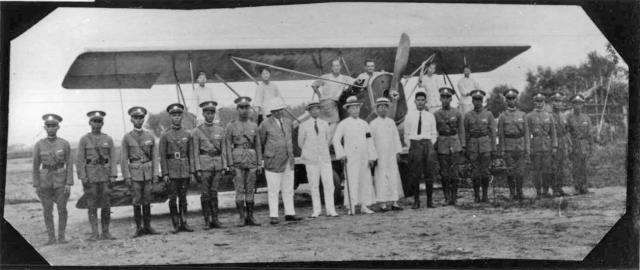
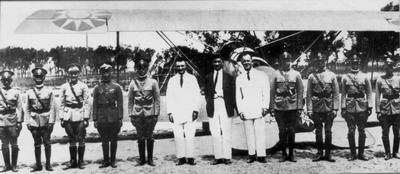
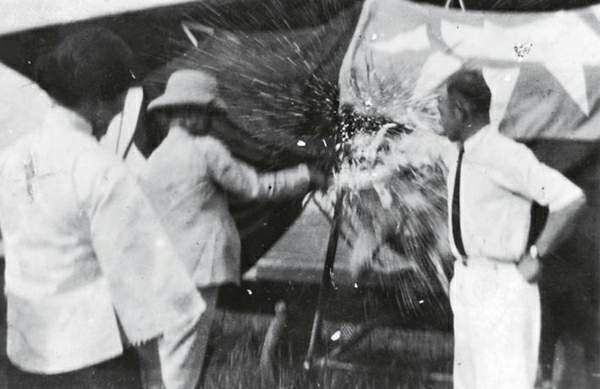
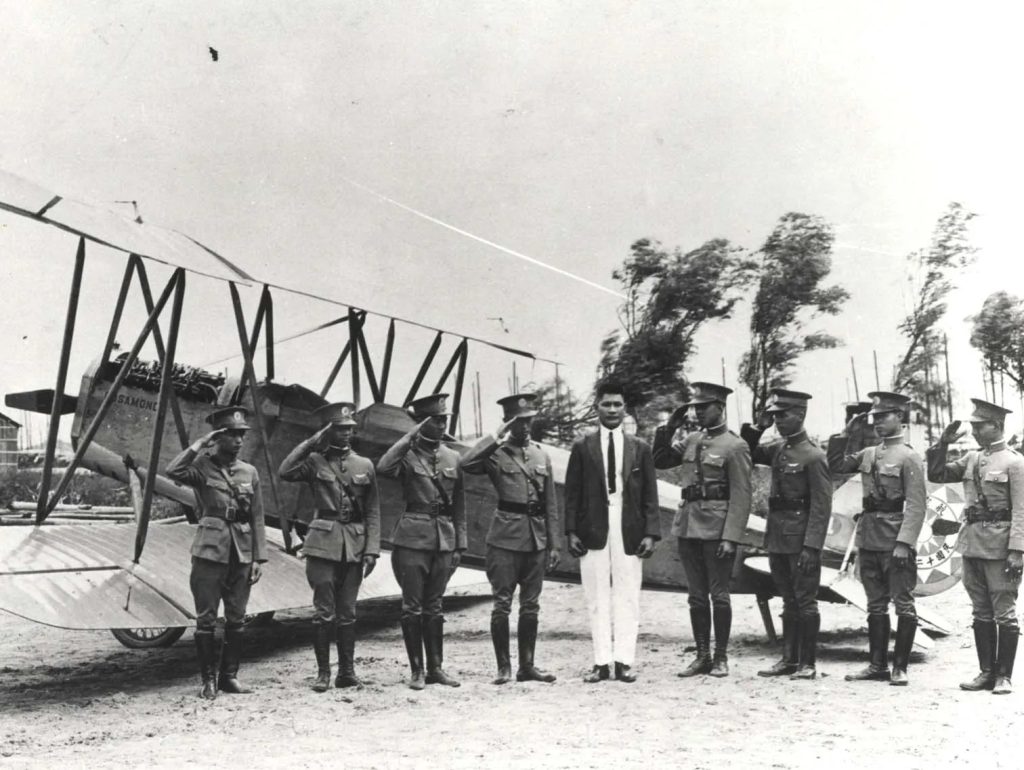
The plane was briefly used Huizou to fight a local warlord, but it soon crashed into a mountain near Huangpu, Guangzhou. The wreckage was brought back to the factory.
For the full destruction, there were two accidents which happened in a short time at the factory. Sources don’t agree which one resulted in the destruction of the programme.
On September 20 an explosion occurred at the workshop when bombs were loaded on a plane, or the modification of a mine or torpedo2. Young was killed in the blast, and part of the workshop was destroyed by a resulting fire. Another possibility is that the plane was destroyed on October 3 during a warehouse fire. The cause was never officially found, but was speculated to be arson as an act of sabotage.
Either way, the “Rosamonde” together with tooling and designs were destroyed by fire. This put a stop to three further aircraft which were under construction as well. When Colwell passed early 1924 and Wild returned to the USA, the aircraft was silently forgotten.
Replica
In 1983 a replica was build based on surviving photographs by 陳應明, Chen Yingming. This replica is now on display at the China Aviation Museum in Beijing, and differes significantly from the original.
In 2017 a second replica was donated to the Aviation Education Exhibition Hall in Taiwan.
Translations
Under “Rosamonde” the nose reads 文士樂, which is a phonetic approximation of “Rosamonde” when reading from right-to-left. It does not seem to have been used elsewhere for Soong. More interesting, this does not match the text on the 2nd replica plane. The replica reads 樂士大, the same but using the modern left-to-right orientation. This right-to-left orientation also occurs on the seal on the tail, which reads 局空航, Hángkōng jú on top, and 造月六年二十國民, Mínguó shí’èr nián liù yuè zào on the bottom. These can be translated as “Aviation Bureau” and “Made in June of the twelfth year of the Republic of China” respectively. On the modern replica, this text is however not inverted.
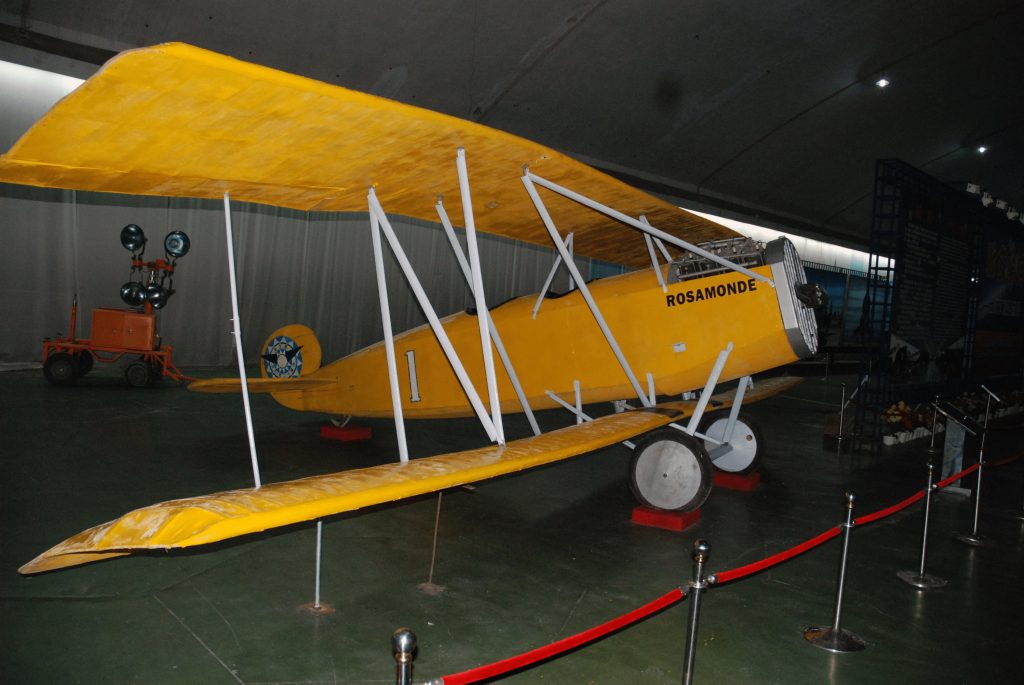
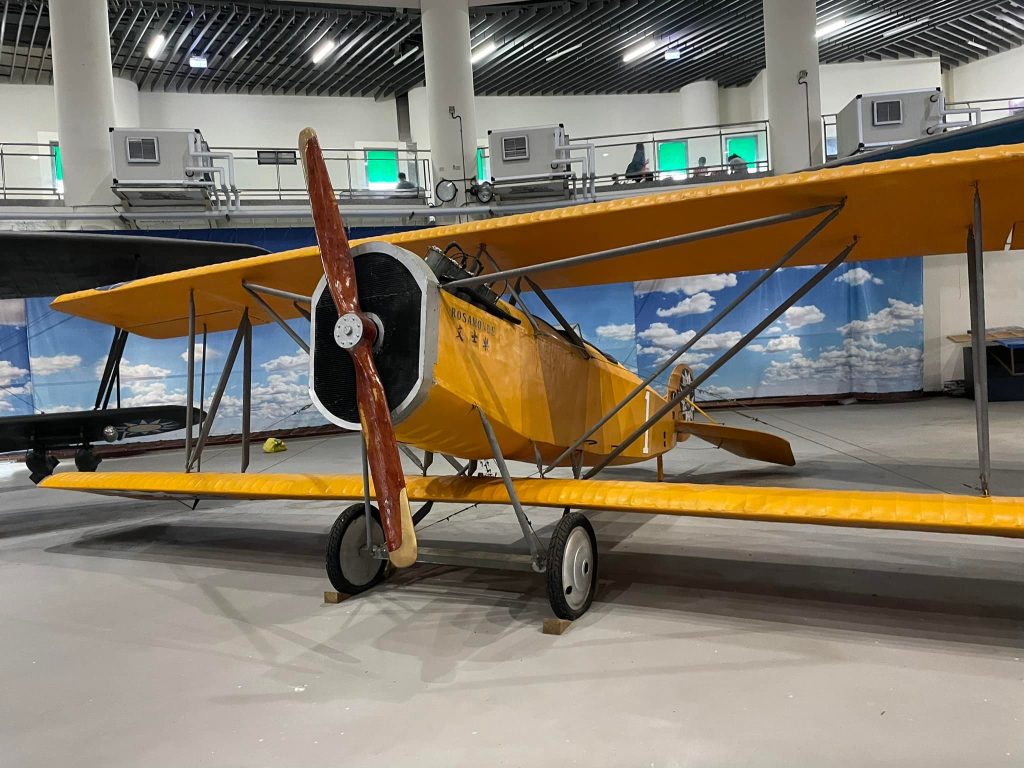
Sources
- Andersson, L. (2008). A history of chinese aviation: Encyclopedia of aircraft and aviation in China until 1949. AHS of ROC.
- Lee, A. (2021, April 20). Historical Record of Chinese Americans | Aim to Fly: Father of the Chinese Revolutionary Air Force. 美华史记. https://usdandelion.com/archives/4499
- 向空軍致敬 彭斯民捐「樂士文號」模型機給航教館. ETtoday. (2017, December 14). https://www.ettoday.net/news/20171214/1072894.htm
- Xiaoci, H. 中國飛機尋根(之十)國父平粵靖亂時期所用之詹尼機暨自製之樂士文機. C中國飛機尋根. (n.d.). http://cwlam2000.epizy.com/caf10.htm
- 乐士文1号. Baike. (n.d.). https://www.baike.com/wikiid/1561844694667768830
- “乐士文”号飞机的故事. Beijing Soong Ching Ling Former Residence. (2021, December 1). https://www.sql.org.cn/yjdt/5381.html
- Bastillepost 巴士的報. (2018, February 9). 民國國產機首次試飛 宋慶齡不怕死登機盤旋. 巴士的報. https://www.bastillepost.com/hongkong/article/2830181-民國國產機首次試飛-宋慶齡不怕死登機盤旋
